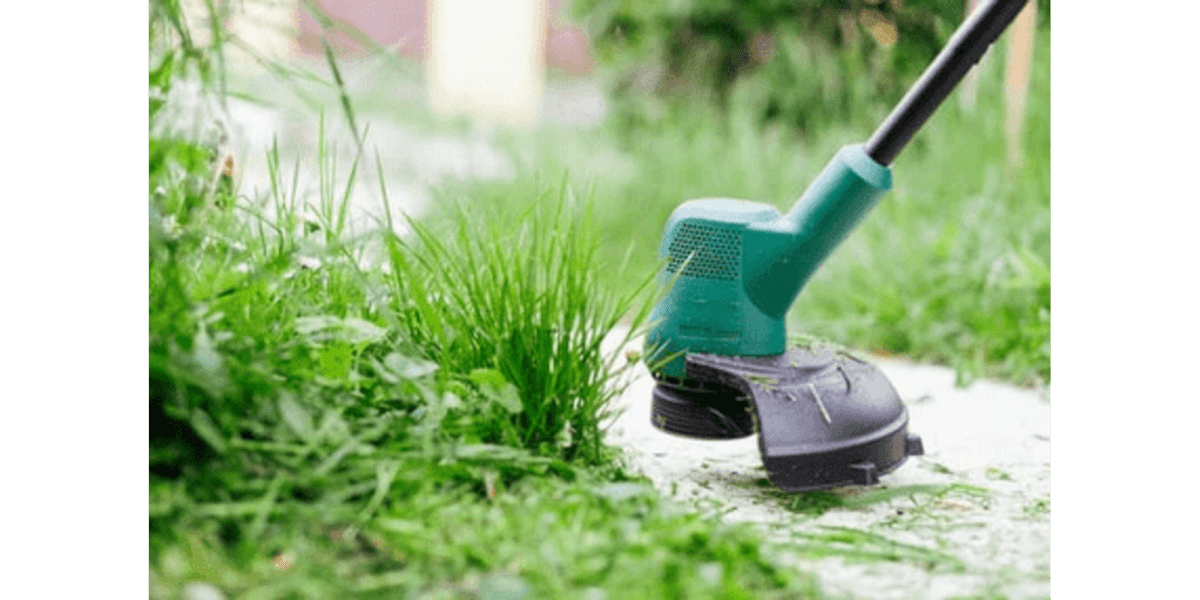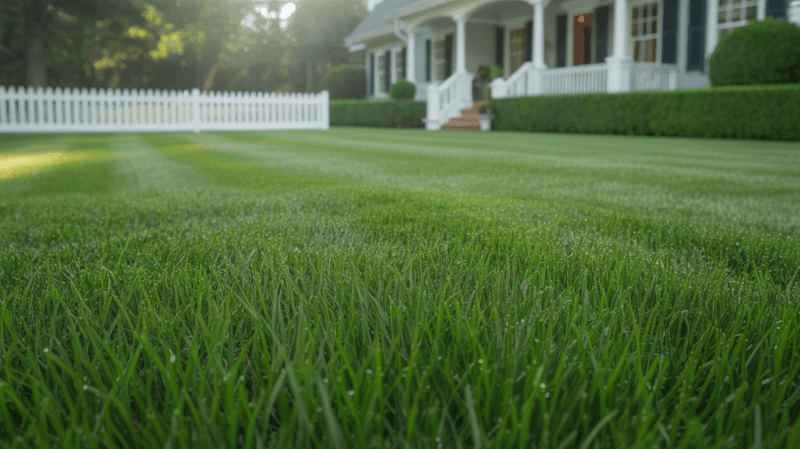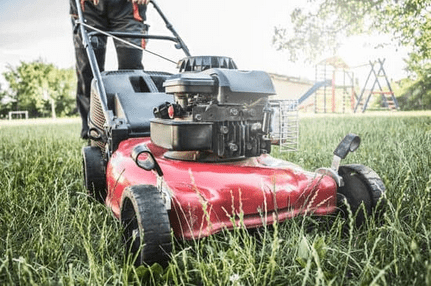Why Your Lawn Deserves an Organic Approach
Creating a lush, green lawn is important, but we must think about how we do it. Traditional lawn care often uses chemicals that harm the environment.
Thinking back on my lawn care journey, a quote by Joe Lamp’l comes to mind. He says, "Junk food. That’s how I think of synthetic fertilizers and pesticides when it comes to lawn care." This hits home for me. It's a key idea for anyone wanting a healthy, sustainable lawn.
Synthetic fertilizers and pesticides might seem like quick fixes. But they can harm our environment and ecosystems. On the other hand, organic lawn care tips and natural lawn maintenance are safer and better for our planet.

Choosing eco-friendly lawn care helps us grow a beautiful, thriving lawn. It makes our outdoor spaces better and helps our planet stay healthy.
Key Takeaways
- Adopting organic lawn care practices promotes a healthier environment.
- Natural lawn maintenance reduces the use of harmful chemicals.
- Eco-friendly lawn care methods contribute to a sustainable ecosystem.
- Sustainable lawn care practices enhance the beauty and health of your lawn.
The Hidden Dangers of Chemical Lawn Products
Chemicals used in lawn care, such as pesticides and fertilizers, can contaminate soil, water, and air. They harm beneficial insects and wildlife, like bees and butterflies, which are key to a healthy ecosystem. Some pesticides are toxic to fish and birds, upsetting local ecosystems.
How Organic Methods Create Healthier Ecosystems
Organic lawn care uses natural products and methods. It improves soil, saves water, and cuts pollution. Organic practices make lawns sustainable and support local wildlife. For example, compost helps soil hold water and nutrients, reducing the need for synthetic fertilizers.
- Promotes soil health through natural amendments
- Conserves water with efficient irrigation practices
- Reduces chemical runoff into waterways
Choosing organic lawn care not only improves your lawn but also benefits the planet.
Five Steps to a Beautiful Organic Lawn
To have a stunning organic lawn, it's essential to understand the basics of organic lawn care. This method fosters a healthy ecosystem that benefits both your lawn and the planet.
The Organic Lawn Philosophy
The organic lawn philosophy is all about natural and sustainable practices. It utilizes organic fertilizer for lawns to promote strong growth without harming the environment. This way, you can have a lush, green lawn that's good for the planet.
https://www.youtube.com/watch?v=iDagxYCfhto
Setting Realistic Expectations for Your Green Journey
It's important to set realistic goals when starting an organic lawn care routine. Remember, a healthy, vibrant lawn doesn't happen overnight. With green gardening tips and patience, you'll enjoy a thriving organic lawn. Here are some key things to keep in mind:
| Aspect | Conventional Lawn | Organic Lawn |
|---|---|---|
| Fertilizer Use | Chemical-based fertilizers | Natural, organic fertilizers |
| Pest Control | Chemical pesticides | Natural pest control methods |
| Maintenance | Frequent mowing and watering | Eco-friendly mowing and watering practices |
By understanding these differences and using lawn maintenance tips that fit organic practices, you're on the right path. You'll be well on your way to a beautiful organic lawn.
Step 1: Test and Improve Your Soil
Starting a beautiful organic lawn means first understanding your soil. Testing your soil is key in an organic lawn care guide. It helps find out the soil's pH level and nutrient content. This info guides you on how to make it better.
DIY Soil Testing Methods
Testing your soil is easy with a DIY kit. These kits have a test strip or probe to check the pH level. For more details, you can send a soil sample to a lab. This will tell you about your soil's nutrients and structure.
Natural Soil Amendments for Different Soil Types
Knowing your soil type helps you choose the right amendments. For clay soil, add organic matter for better drainage. Sandy soils need something to hold moisture.
Clay Soil Solutions
Clay soils get better with compost or well-rotted manure. These improve drainage and aeration. It's a key part of green lawn care techniques for healthy soil.
Sandy Soil Enhancements
Sandy soils benefit from organic matter, such as peat moss or coconut coir. These help keep water and nutrients. Using these is a smart and eco-friendly choice for lawn maintenance.
Building a Healthy Soil Microbiome
A healthy soil microbiome is vital for a lush organic lawn. Avoid using chemical fertilizers and pesticides, as they can harm beneficial microbes. Instead, use natural fertilizers and keep the soil moist. This supports a diverse microbial community. It's a key part of natural lawn care solutions that are environmentally friendly.
Step 2: Choose the Right Grass Varieties
Choosing the right grass is key to a healthy lawn. It makes your outdoor space vibrant and sustainable. The grass type greatly affects your lawn's health and appearance.
Region-Specific Grass Recommendations for the US
Different parts of the US have unique climates. Knowing your local climate helps you pick the best grass for your area.
Cool-Season Grass Options
In cooler areas, like the northern US, choose cool-season grasses. Kentucky bluegrass, perennial ryegrass, and tall fescue are great. They thrive in cooler weather and can withstand cold winters.
Warm-Season Grass Options
For warmer areas, like the southern US, warm-season grasses are better. Bermudagrass, zoysiagrass, and buffalograss are good choices. They can withstand hot weather and survive with minimal water.
Proper Seeding and Overseeding Techniques
After picking your grass, seeding and overseeding are crucial. Ensure the soil is prepared before seeding. Overseed where the grass is thin for a fuller lawn.
Creating a Diverse Lawn Ecosystem
A diverse lawn is more effective at fighting pests and diseases. Mix different grasses and add native plants. This boosts biodiversity and makes your lawn care more sustainable.
| Grass Type | Climate Suitability | Maintenance Level |
|---|---|---|
| Kentucky Bluegrass | Cool-season | Medium |
| Bermudagrass | Warm-season | High |
| Tall Fescue | Cool-season | Low |

Step 3: Feed Your Lawn Naturally
Feeding your lawn with organic fertilizers is key for sustainable lawn care practices. Natural feeding methods keep your lawn healthy and help the environment. We'll explore natural fertilization options and a seasonal feeding plan to achieve optimal results.
Homemade Compost and How to Apply It
Making your own compost is a great way to feed your lawn. Mix kitchen scraps, leaves, and grass clippings in a bin or pile. Make sure it's well-mixed and moist. Spread a thin layer (about 1/4 inch) evenly over your lawn when it's ready.
Store-Bought Organic Fertilizer Options
If making compost is hard, try store-bought organic fertilizers. These are made from natural stuff like bone meal and fish emulsion. Choose certified organic products with a balanced N-P-K ratio. Always use the amount and timing suggested by the maker.
Seasonal Feeding Schedule for Maximum Results
To keep your lawn healthy all year, use a seasonal feeding plan. Here's a simple guide:
| Season | Fertilizer Type | Application Rate |
|---|---|---|
| Spring | Compost or balanced organic fertilizer | 1-2 pounds per 1,000 sq ft |
| Summer | Slow-release organic fertilizer | 1 pound per 1,000 sq ft |
| Fall | Compost or high-phosphorus organic fertilizer | 1-2 pounds per 1,000 sq ft |
By following this plan and using natural fertilizers, you can support environmentally friendly lawn care practices. This benefits your lawn and the environment.
Step 4: Manage Weeds and Pests Without Chemicals
To keep your lawn healthy, managing weeds and pests without chemicals is key. Organic lawn care is more than avoiding harmful substances. It's about creating a balanced ecosystem that naturally fights pests and weeds.
Preventative Organic Weed Control Strategies
Preventing weeds from growing is better than trying to remove them later. A dense, healthy lawn is the best defense. This is achieved through proper mowing, watering, and fertilizing.
- Maintain proper mowing height to promote healthy grass growth.
- Water deeply but infrequently to encourage deep root growth.
- Fertilize with organic, slow-release fertilizers.
Natural Solutions for Common Lawn Pests
Common pests like grubs, chinch bugs, and billbugs can be managed naturally. For example, introducing beneficial nematodes into your soil can control grub populations.
| Pest | Natural Control Method |
|---|---|
| Grubs | Beneficial Nematodes |
| Chinch Bugs | Insecticidal Soap |
| Billbugs | Pyrethrin Sprays |
Manual Removal and Spot Treatment Methods
For weeds that do appear, removing them by hand or using organic herbicides is effective. It's important to know the weed type to choose the right method.

By using these strategies, you can manage weeds and pests without chemicals. This keeps your lawn healthy and beautiful.
Step 5: Maintain Your Lawn Sustainably
To keep your organic lawn thriving, it's essential to adopt sustainable maintenance practices. This involves a combination of eco-friendly mowing, water-wise irrigation, and regular seasonal maintenance.
Eco-Friendly Mowing Practices
Mowing is a crucial aspect of lawn maintenance. To do it sustainably, consider the following:
- Mow at the right height for your grass type.
- Use sharp mower blades to prevent tearing the grass.
- Leave the clippings on the lawn to act as a natural fertilizer.
Proper Mowing Height by Grass Type
Different grass types have optimal mowing heights. For example, cool-season grasses like Kentucky bluegrass should be mowed at 2.5-3 inches, while warm-season grasses like Bermudagrass can be mowed at 1-2 inches.
Grasscycling Benefits
Grasscycling, or leaving grass clippings on the lawn, reduces the need for fertilizers and minimizes waste. It's a simple yet effective way to maintain your lawn sustainably.
Water-Wise Irrigation Methods
Efficient irrigation is critical for a sustainable lawn. Consider installing a rain sensor or smart irrigation controller to optimize water usage.
Seasonal Maintenance Calendar
A seasonal maintenance calendar helps you stay on track with lawn care tasks. Here's a simple table to guide you:
| Season | Tasks |
|---|---|
| Spring | Aerate, fertilize, and overseed as needed. |
| Summer | Mow regularly, water deeply but infrequently. |
| Fall | Aerate, apply compost, and prepare for winter. |
| Winter | Minimize traffic on the lawn, plan for spring. |
By following these sustainable maintenance practices, you can enjoy a beautiful, eco-friendly lawn that benefits both you and the environment.
Conclusion: Enjoying the Rewards of Your Organic Lawn
Reflecting on my journey to a beautiful organic lawn, I see many benefits. Using organic lawn care tips and natural lawn care solutions has made my outdoor space more beautiful. It also helps the environment.
Choosing eco-friendly lawn care means I have a lush, vibrant lawn that doesn't harm the planet. The steps in this article helped me achieve this. They range from improving soil quality to sustainable lawn care.
By picking sustainable lawn care practices, I've made a wildlife-friendly haven. I've also reduced my use of chemicals. I'm eager to share my experiences and learn from others who care about organic lawns.
Now, it's your turn to enjoy the fruits of your labor. Be proud of your organic lawn. It brings joy to your family and benefits the environment.
FAQ
What are the benefits of adopting organic lawn care methods?
Organic lawn care makes your environment healthier. It reduces chemical contamination risks. It also supports a sustainable lawn ecosystem.
How do I test my soil to determine its type and nutrient content?
What are some natural amendments I can use to improve my soil quality?
How do I choose the right grass variety for my lawn?
What are some eco-friendly mowing practices I can adopt?
How can I manage weeds and pests without using chemicals?
What is the best way to fertilize my lawn naturally?
How often should I water my lawn to maintain a healthy and sustainable ecosystem?
What are some sustainable lawn maintenance practices I can adopt?



